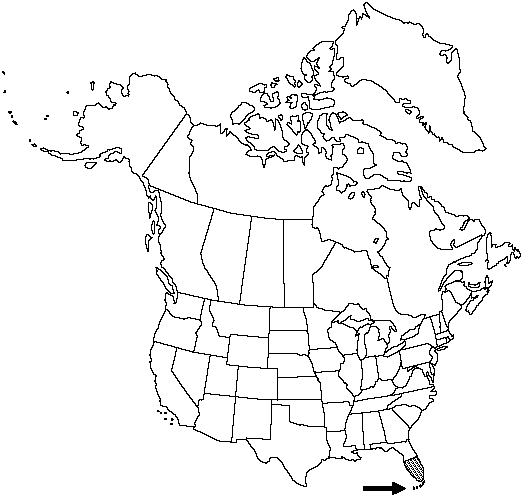Difference between revisions of "Tectaria fimbriata"
Bradea 5: 386. 1990.
FNA>Volume Importer |
FNA>Volume Importer |
||
| Line 15: | Line 15: | ||
|name=Aspidium minimum | |name=Aspidium minimum | ||
|authority=(L. Underwood) Clute | |authority=(L. Underwood) Clute | ||
| − | }}{{Treatment/ID/Synonym | + | }} {{Treatment/ID/Synonym |
|name=Aspidium trifoliatum var. minimum | |name=Aspidium trifoliatum var. minimum | ||
|authority=Clute | |authority=Clute | ||
| − | }}{{Treatment/ID/Synonym | + | }} {{Treatment/ID/Synonym |
|name=Sagenia lobata | |name=Sagenia lobata | ||
|authority=C. Presl | |authority=C. Presl | ||
| − | }}{{Treatment/ID/Synonym | + | }} {{Treatment/ID/Synonym |
|name=Tectaria lobata | |name=Tectaria lobata | ||
|authority=(C. Presl) C. V. Morton | |authority=(C. Presl) C. V. Morton | ||
| − | }}{{Treatment/ID/Synonym | + | }} {{Treatment/ID/Synonym |
|name=Tectaria minima | |name=Tectaria minima | ||
|authority=L. Underwood | |authority=L. Underwood | ||
| Line 41: | Line 41: | ||
|elevation=0 m | |elevation=0 m | ||
|distribution=Fla.;Mexico in Yucatán;West Indies in Bahamas;Greater Antilles. | |distribution=Fla.;Mexico in Yucatán;West Indies in Bahamas;Greater Antilles. | ||
| − | |discussion=<p>The hybrid between Tectaria fimbriata and T. coriandrifolia is T. × amesiana A. A. Eaton. Although intermediate between the two parents, the hybrid will lead to T. fimbriata in the key. The hybrid may be distinguished from T. fimbriata by scattered hairs on abaxial surface of petioles and misshapen spores.</p> | + | |discussion=<p>The hybrid between <i>Tectaria fimbriata</i> and <i>T. coriandrifolia</i> is T. × amesiana A. A. Eaton. Although intermediate between the two parents, the hybrid will lead to <i>T. fimbriata</i> in the key. The hybrid may be distinguished from <i>T. fimbriata</i> by scattered hairs on abaxial surface of petioles and misshapen spores.</p> |
|tables= | |tables= | ||
|references= | |references= | ||
| Line 64: | Line 64: | ||
|publication year=1990 | |publication year=1990 | ||
|special status= | |special status= | ||
| − | |source xml=https://jpend@bitbucket.org/aafc-mbb/fna-data-curation.git/src/ | + | |source xml=https://jpend@bitbucket.org/aafc-mbb/fna-data-curation.git/src/8f726806613d60c220dc4493de13607dd3150896/coarse_grained_fna_xml/V2/V2_489.xml |
|genus=Tectaria | |genus=Tectaria | ||
|species=Tectaria fimbriata | |species=Tectaria fimbriata | ||
Revision as of 15:48, 18 September 2019
Stems horizontal, short-creeping. Petiole straw-colored, 1–3 times length of blade, hairs absent abaxially, pubescent adaxially, base scaly; scales lanceolate to linear, 1–3 × 0.3–0.5 mm. Blade deltate to pentagonal, 1-pinnate or ternately lobed, 5–10 × 3–7 cm. Rachis and costae pubescent abaxially. Pinnae absent or 1(–2) pair, or blade shallowly pinnatifid, 4–7 cm, base rounded, without proliferous buds in axils. Areoles rarely with included veinlets. Indusia peltate. 2n = 80.
Habitat: Sinkholes, on shaded ledges or occasionally in sun
Elevation: 0 m
Distribution

Fla., Mexico in Yucatán, West Indies in Bahamas, Greater Antilles.
Discussion
The hybrid between Tectaria fimbriata and T. coriandrifolia is T. × amesiana A. A. Eaton. Although intermediate between the two parents, the hybrid will lead to T. fimbriata in the key. The hybrid may be distinguished from T. fimbriata by scattered hairs on abaxial surface of petioles and misshapen spores.
Selected References
None.